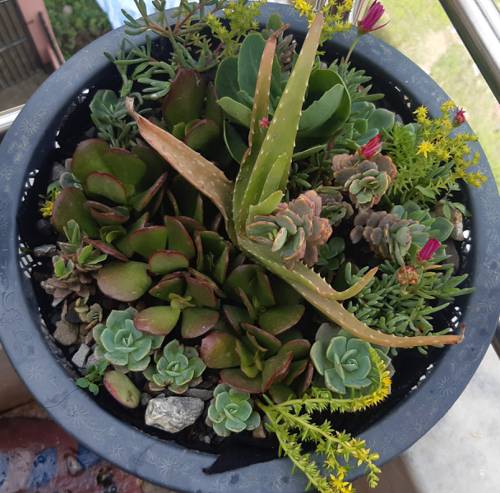
FAQ About Indoor Plant Biodiversity Maintenance

What is indoor plant biodiversity?
Indoor plant biodiversity refers to the variety and variability of plant species within indoor environments, such as homes, offices, and other enclosed spaces. This diversity includes different species, varieties, and genetic differences within those species.

Why is maintaining biodiversity in indoor plant collections important?
Maintaining biodiversity in indoor plant collections is crucial for promoting ecological balance, improving air quality, and enhancing the resilience of plant ecosystems. Diverse plant collections can support a range of beneficial microorganisms, insects, and other organisms, contributing to a healthier indoor environment.

How does plant diversity affect plant health in indoor environments?
Plant diversity can enhance plant health by reducing the spread of pests and diseases. Diverse plant species may better support beneficial insects and promote nutrient cycling, which can lead to healthier plants overall.

Can maintaining biodiversity improve air quality indoors?
Yes, maintaining a diverse collection of indoor plants can improve air quality by increasing the range of pollutants absorbed and enhancing oxygen production. Different species can absorb various toxins and pollutants, reducing indoor air pollution.

What are some examples of plants that contribute to indoor biodiversity?
Examples of plants that contribute to indoor biodiversity include ferns, succulents, flowering plants like orchids and peace lilies, and larger species like indoor palms. Each of these plants brings unique characteristics and benefits to an indoor plant collection.

How can I start enhancing biodiversity in my indoor plant collection?
Start by selecting a variety of plant species that thrive in similar conditions, such as similar light and humidity levels. Mix different types of plants, such as ferns, succulents, and flowering plants, to create a diverse plant community.

Are there specific challenges to maintaining biodiversity indoors?
Challenges include limited space, varying plant care needs, and potential pest issues. It requires careful planning to ensure each plant receives the right amount of light, water, and nutrients and regular monitoring for pests or diseases.

Do indoor plants affect each other's growth in biodiverse collections?
Yes, plants in biodiverse collections can affect each other's growth, both positively and negatively. Companion planting can enhance growth by repelling pests or providing beneficial shade, but competition for resources like light and water can also occur.

How does biodiversity contribute to the ecological balance of indoor spaces?
Biodiversity contributes to ecological balance by supporting a variety of living organisms, including beneficial insects and microorganisms. This diversity helps regulate processes like pollination, decomposition, and pest control, creating a balanced indoor ecosystem.

Can indoor plant biodiversity be beneficial for mental health?
Yes, a diverse indoor plant environment can boost mental well-being by creating a calming and aesthetically pleasing space. Interacting with a variety of plants can also reduce stress and enhance mood, contributing to overall mental health.

How do you manage pests in a biodiverse indoor plant environment?
Managing pests involves monitoring plants regularly and using cultural, biological, or chemical methods as needed. Encouraging natural predators, using insecticidal soaps, and ensuring optimal plant conditions can all help in controlling pest populations.

Should indoor plant biodiversity include native species?
Including native species in an indoor plant collection can be beneficial as they may better support local biodiversity and require less specialized care. Native plants can also be more resilient and adapted to the local climate and pest conditions.

Is biodiversity maintenance a sustainable practice for indoor gardening?
Yes, maintaining biodiversity is a sustainable practice as it helps create a self-regulating indoor ecosystem, reduces the need for chemical inputs, and supports ecological balance. It also promotes environmental awareness and conservation efforts.

How do light conditions affect indoor plant biodiversity?
Light conditions significantly affect which plant species can thrive indoors. It's important to match plant species to available light environments to maintain biodiversity, ensuring each plant type can grow successfully without outcompeting others for sunlight.

What role does soil play in maintaining indoor plant biodiversity?
Soil is a critical factor in maintaining plant biodiversity as it provides nutrients, water, and essential microorganisms. Using a diverse range of soil types and additives can help support different plant species' nutritional and structural needs.

Can companion planting be applied to indoor plant collections?
Yes, companion planting can be effectively used indoors to improve plant health and deter pests. By grouping plants that naturally support each other, you can enhance growth conditions and overall biodiversity.

Do indoor plant pots affect biodiversity?
Yes, the choice of pots can influence biodiversity. Different pot sizes, materials, and styles can affect water retention, drainage, and root space, all of which are important for supporting a variety of plant species.

How often should I assess my indoor plant biodiversity?
Regular monitoring is key to maintaining a healthy indoor plant collection. Assess your biodiversity monthly to ensure plants are thriving, check for pests and diseases, and adjust care practices as needed to support diverse plant needs.

Can technology assist in maintaining indoor plant biodiversity?
Technology, such as smart plant sensors, can assist in maintaining biodiversity by providing real-time data on plant health, moisture levels, and light conditions. This information can help optimize care for a diverse plant collection.

What are some misconceptions about indoor plant biodiversity?
A common misconception is that more species always mean better biodiversity. In reality, it is important to select compatible varieties that support each other's growth and overall ecosystem health, rather than simply increasing the number of species.
